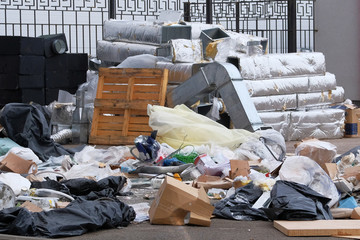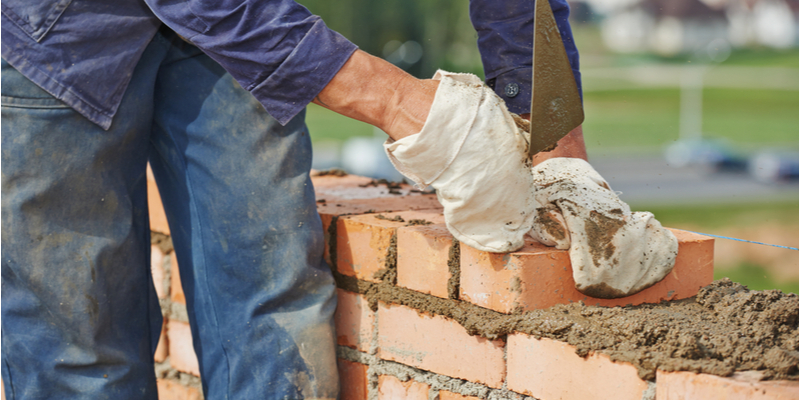Junk haulers are professionals who remove unwanted items from homes and businesses. They offer two different services: truck hauling, junk removal, and dumpster rentals.
Junk removal companies often recycle and donate items, trying to keep as much junk out of the landfill as possible. But there are some items that they can’t take, such as Styrofoam, number 6 plastics, and blood or feces. Contact Sgt Junk-It for professional help.
Junk removal businesses should have insurance policies in place to protect them against unforeseen accidents and incidents. These include liability coverage, property damage protection, workers’ compensation, and more. The cost of these coverages will vary based on the type of waste and other factors, including whether or not you are licensed to haul hazardous materials. It’s also a good idea to register your business with the city and county, or with your state or country. In the United States, this means registering an Employer Identification Number (EIN), Payroll Tax Registration, Unemployment and Workers’ Compensation Registration, and a Business License. You may also need a waste carrier permit for transporting large amounts of junk.
Depending on your business model and the types of junk you can remove, you may choose to form an LLC. This offers more flexibility than a sole proprietorship, and it can help protect you from liability in case you or your employees are involved in an accident. You should also decide if you will operate as a partnership or corporation, and if so, how many owners there will be.
To attract customers, a junk removal company should have a website with photos of completed jobs and an easy booking system. The site should also provide information about the services offered, including pricing and payment methods. It is a good idea to create a logo and print business cards that feature it. This will help customers recognize your brand.
Junk haulers should also have the right equipment to handle any job. This includes trucks with trailers to carry heavy loads, and a garbage disposal permit. A reliable company will be able to provide a free quote and schedule a time for your junk to be removed.
A good junk removal service will have a clean truck and uniformed crew. It will also be bonded and insured, and have a positive reputation in the community. The company should also be able to provide references from past clients.
Junk removal companies have to deal with a variety of situations, from the standard trash pickup and cleanup to more complex projects, such as complete home or office clean-outs. These can involve a lot of heavy lifting and potentially dangerous conditions. This is why it’s important for junk haulers to be licensed and insured, so that their customers can have peace of mind knowing they are in good hands.
Eco-Friendly
The United States creates more waste than any other country, and a large part of that is from the junk we throw away. Junk removal companies play a crucial role in reducing the amount of trash we produce, but it is important to choose a company that practices eco-friendly junk disposal methods. These techniques include recycling, donation, and upcycling. In addition to reducing the amount of waste, these practices also help conserve resources and reduce energy use.
When choosing a junk removal company, be sure to ask what percentage of items they recycle or donate. Then, find out how they dispose of the rest of the junk they collect. You can also ask about their pricing, as this will be a significant factor in the cost of your project.
Junk haulers use large trucks with dumpsters in the back, and they’ll load up all of your junk into it to be taken away. This type of service is great for big projects, such as cleaning out a basement or an attic. It can be difficult to do on your own, and it’s not safe for you or your family members to try to lift heavy items without the proper equipment.
Unlike regular garbage pickup, junk haulers will often recycle or donate your old items instead of just throwing them away in landfills. They understand that their actions impact the environment and want to do everything they can to minimize their environmental footprint. Additionally, they know that customers are becoming more environmentally conscious and want to work with companies that share their values.
Using an ecofriendly junk removal company will save you time and money in the long run. They will provide you with a price estimate on the phone and will schedule a pickup time that works for your schedule. This will allow you to clear out your space and get rid of all of that junk you’ve been holding onto for years. It will also give you more room to move around, and you won’t have to worry about tripping over that unused vacuum cleaner or banging your head on the table that no longer works.
Fast and Reliable
Junk hauler is a type of business that specializes in the removal and disposal of unwanted items. They typically use clean, well-maintained trucks and employ a uniformed team that is courteous and professional. They also have a good reputation for being fair and honest with their customers. They also make sure to recycle as much of the junk as possible, which helps keep landfills from filling up.
The junk removal process can be a lot of work. It’s important to have a crew that is fast and reliable. This will help you get the job done faster and ensure that your clients are satisfied. You can do this by training your employees and providing them with the tools they need to complete the job in a timely manner.
When hiring a junk hauler, look for one that offers free onsite estimates. This will give you a clear idea of the price and how long it will take them to remove your junk. Ideally, they should call you 15-30 minutes before your appointment window to give you an accurate time frame for when they will arrive.
A junk removal company that is reputable will have an experienced crew and offer affordable rates. They can handle a variety of projects, from residential junk removal to commercial office cleanouts. They can even recycle electronics, such as laptops and televisions, which is beneficial for the environment. They can also dispose of hazardous materials like asbestos and lead, which are both very dangerous for humans.
Affordable
A junk hauler is a great option if you have bulky items that don’t fit into your garbage bin or have tons of clutter that you need to get rid of. Junk removal companies work a lot like hired movers, except that they take your stuff away forever. Junk removal services are typically available on demand, so you can book them anytime that you need to clear out your space.
Full-service junk removal is typically a little more expensive than picking up your own trash, but it’s worth the extra cost if you want to save time and energy. These services generally involve a team of 2-3 people who will come to your home or office, load all of your junk into a truck or dumpster, and then take it away for good. Some of these services require an in-person initial quote before they start working, but others will provide you with a rough estimate online or over the phone.
Some junk removal companies have a flat rate for certain types of junk, while others have a price per item. The price per item is usually higher for larger or heavier items, such as furniture or appliances. Labor costs are also included in the junk removal price, and most companies will factor those in when giving you an upfront quote.
If you’re planning to do a lot of junk hauling at your house, it’s often cheaper to rent a junk removal dumpster. You’ll need to pay a fee to rent the dumpster, but you’ll have more flexibility to load and unload your junk as needed. This type of service is also a great option for post-renovation clean-ups or major spring cleaning.
Many junk removal companies will recycle as much of your junk as possible, and they’ll try to find eco-friendly ways to dispose of the rest. This helps to reduce the amount of waste that ends up in local landfills, and it’s a great way to make sure that your old junk doesn’t end up hurting the environment or damaging your community.



